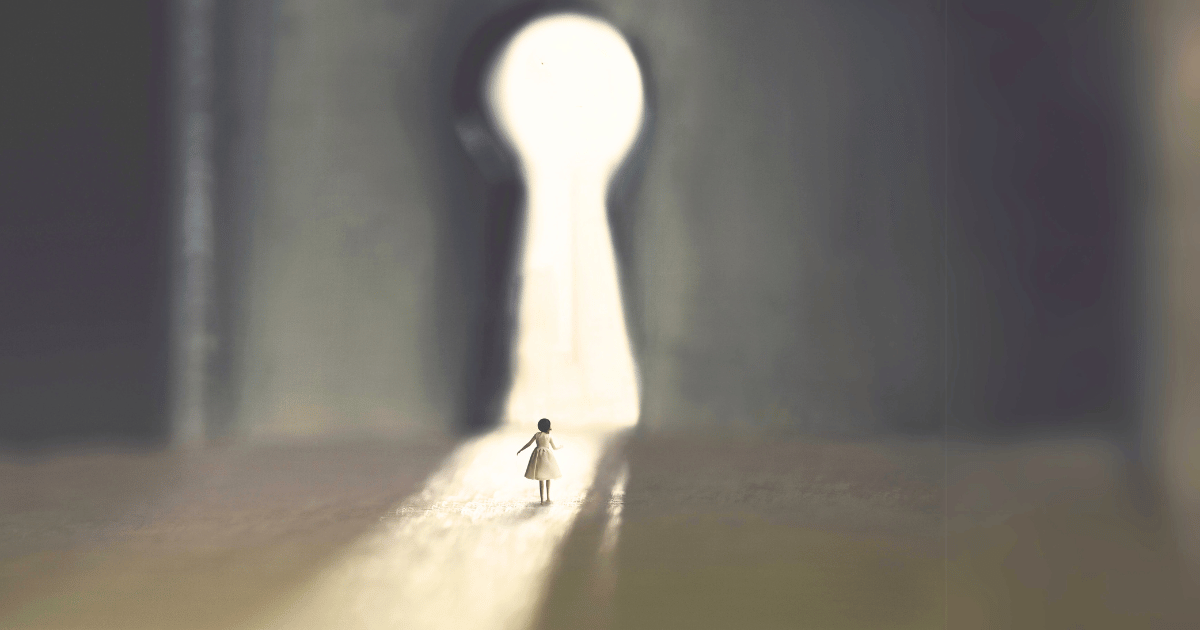İçindekiler
ToggleThe Concept of the Inner Child and Its Origins
The concept of the inner child was first introduced by psychologist Carl Jung. According to Jung, everything we do and every decision we make is largely influenced by this inner side. The child within us represents our childhood self from the past and exists in all of us.
“Adults are secretly controlled by their unconscious inner children.”
This statement underlines how important the inner child is in our lives, according to Jung.

Childhood and the Perception of Self-Worth
During childhood, the behaviors of those who cared for us (parents or other close individuals) shape the value we assign to ourselves. Whether or not we feel loved, worthy of attention, and compassion as a child is determined by the attitudes of the adults around us. Children need to:
- Be acknowledged emotionally
- Be listened to
- Be embraced
- Feel safe physically, emotionally, and spiritually
If a child frequently feels threatened, a deep wound opens in their soul. Many adults suppress this wound without realizing it. (Kneisl, 1991)
The Definition of Emotional Neglect
According to Dr. Jonice Webb, emotional neglect is “a parent’s failure to adequately respond to a child’s emotional needs.” When parents are unaware of the meaning and importance of emotions during childhood, neglect can occur unnoticed.
In short: Emotional neglect stems from parents being unable to understand the significance of emotions or respond to them adequately.
How Does the Inner Child Heal?
The Wound in the Inner Child
Deep within our souls, we carry a wounded inner child. Unless it is addressed, this wound can persist throughout a lifetime. As long as childhood traumas remain unresolved, the conclusions our inner child drew from past experiences continue to profoundly influence our adult relationships and decisions. This especially applies to someone who experienced emotional neglect in childhood and carries it into adulthood.
How Can You Recognize It?
If you identify with one or more of the following signs, you may have experienced emotional neglect in childhood:
- Difficulty saying “no”
- Trying to please people but never succeeding
- Constantly putting your own needs second to be loved
- Struggling to set boundaries
- Feeling guilty when you stand up for yourself
- Fear of abandonment
- Dependent relationships (inability to let go of people or possessions)
- Hesitating to ask for help, fearing you might be a “burden”
- Feeling inadequate or worthless
- Constant self-criticism
- Perfectionism
The Compulsion to Repeat and Attachment Styles
Sigmund Freud states that people possess a compulsion to repeat, even if they don’t want to. Therefore, those who experienced emotional neglect in childhood tend to relive similar situations repeatedly in adulthood. This often appears as an “insecure-anxious attachment” in relationships. Such individuals:
- Are dependent in relationships
- Need constant reassurance that they are loved
Research (especially studies involving adult women aged 18–24) demonstrates a strong correlation between childhood trauma and high levels of anxious attachment in adulthood.

Transgenerational Trauma
Emotions transmitted to us starting in the womb—and even further back, if our parents experienced traumatic events—can pass from one subconscious to another. A parent’s unresolved trauma is unconsciously passed on to the child.
In short: If the emotional wounds in a family’s history remain unhealed, they are carried into future generations.
“An adult is a child in grown-up clothes.” — Woody Harrelson
Below is a guide on “Healing the Inner Child.” These suggestions focus on raising awareness, reducing emotional burdens, and establishing a healthy relationship with your inner child. Remember that every journey is personal; adapt these steps to fit your own emotional situation.
1. Recognize and Accept Your Inner Child
a) Cultivate Awareness
Approaching the idea “There’s a child inside me” with a conscious mindset is the first step toward healing. The emotions you felt in childhood, the events you experienced, or the unmet needs you had may still exist in your subconscious.
- At this stage, it’s crucial to ask, “What is the child inside me like right now?” and proceed with the intention of hearing that inner voice.
b) Embrace Vulnerability
Your inner child may be fragile, vulnerable, and emotionally sensitive. Recognize that this isn’t “weakness” but part of being human.
- Allow yourself to say, “All these emotions are valid and natural; they reflect my past experiences.”
2. Connecting with the Past: Examining Memories
a) Recall Your Childhood Years
Set aside time to revisit your childhood. Reflect on memories of family, school, or friendships.
- As you remember: Consider moments when you felt loved and safe, as well as times of fear, sadness, or loneliness.
b) Identify Pain and Unmet Needs
Which emotional needs went unfulfilled when you were a child? Did you need more approval, attention, or protection? Making a note of these helps you understand yourself better.
- During this step, you begin to clarify the theme of the “wounded child” in your mind. Naming your needs and disappointments accelerates the healing process.
3. Practicing Communication and Listening
a) Try Visualization Exercises
Sit or lie in a comfortable setting. Close your eyes and imagine your inner child standing before you. Notice their age, facial expression, clothing, and emotional state.
- Then, picture yourself saying phrases like “I hear you. I understand you. I’m here for you.” This helps form an emotional bridge with your inner child.
b) Keep a Journal and Write Letters
Writing a letter to your inner child can be highly effective. Use it to express any thoughts, needs, or emotions you couldn’t articulate as a child.
- Review what you’ve written later to determine which areas require the most support and compassion.

4. Unconditional Compassion and Reframing Emotions
a) Release Your Emotions
Emotions such as anger, sadness, or fear may surface. Rather than suppressing them, acknowledge their validity and find healthy ways to express them.
- Activities like drawing, dancing, gentle yoga, or breathing exercises can help your inner child feel free to express itself.
b) Develop Positive Communication Patterns
When talking to your inner child, use empathetic, non-judgmental language. For instance, offer positive feedback with phrases like “You are valuable” or “I want to protect and support you.”
- This approach shifts your focus from self-blame to self-support.
5. Establish a Secure Bond with Your Adult Self
a) Set Boundaries and Recognize Your Own Power
Your boundaries may have been violated in childhood. Today, you can reinforce a sense of control by determining your own responsibilities and limits as an adult.
- Telling yourself, “I’m an adult now, I’m safe, and I have the power to make decisions,” reassures your inner child.
b) Self-Care and Self-Worth
Organizing basics like nutrition, sleep, and exercise also indirectly heals your inner child. It satisfies the “need to be cared for” that may have gone unmet.
- Rewarding yourself regularly or creating small joys (cooking your favorite meal, going for a nature walk, working on creative hobbies, etc.) strengthens your sense of self-worth.
6. Time and Patience
a) The Nature of the Process
Healing the inner child is not a “one-and-done” process. Old wounds can flare up at times, or you might suddenly recall past memories. Accept these moments as natural parts of the journey.
b) Progress Step by Step
Moving forward without blaming yourself or rushing is essential. Each wave of emotion is a signal from your inner child trying to reconnect with you.
Make Peace with Yourself and Reunite with Your Inner Child
At its core, healing the inner child is the cornerstone of spiritual transformation. In this process:
- You become aware of old wounds and emotional tangles,
- Address them with conscious adult compassion,
- Begin to foster deeper self-respect and self-love.
Remember, at every step of this journey, intending to show love and understanding to the fragile child of the past is your most powerful source of healing. As your self-compassion grows, the quality of your relationships, the soundness of your decisions, and your overall life satisfaction also increase.
This blog is for informational purposes only and is not a substitute for medical advice. Everyone’s situation is unique. The purpose of this content is to raise awareness.
References
- miace.org/how-to-recognize-if-your-childhood-trauma-is-affecting-you-as-an-adult-how-to-heal/
- integrativepsych.co/new-blog/what-is-an-inner-child
- drjonicewebb.com
- betterhelp.com/advice/therapy/inner-child-what-is-it-what-happened-to-it-and-how-can-i-fix-it/
- Kneisl, C.R. (1991). Healing the wounded, neglected inner child from the past. The Nursing Clinics of North America, 26(3), 745–755.












